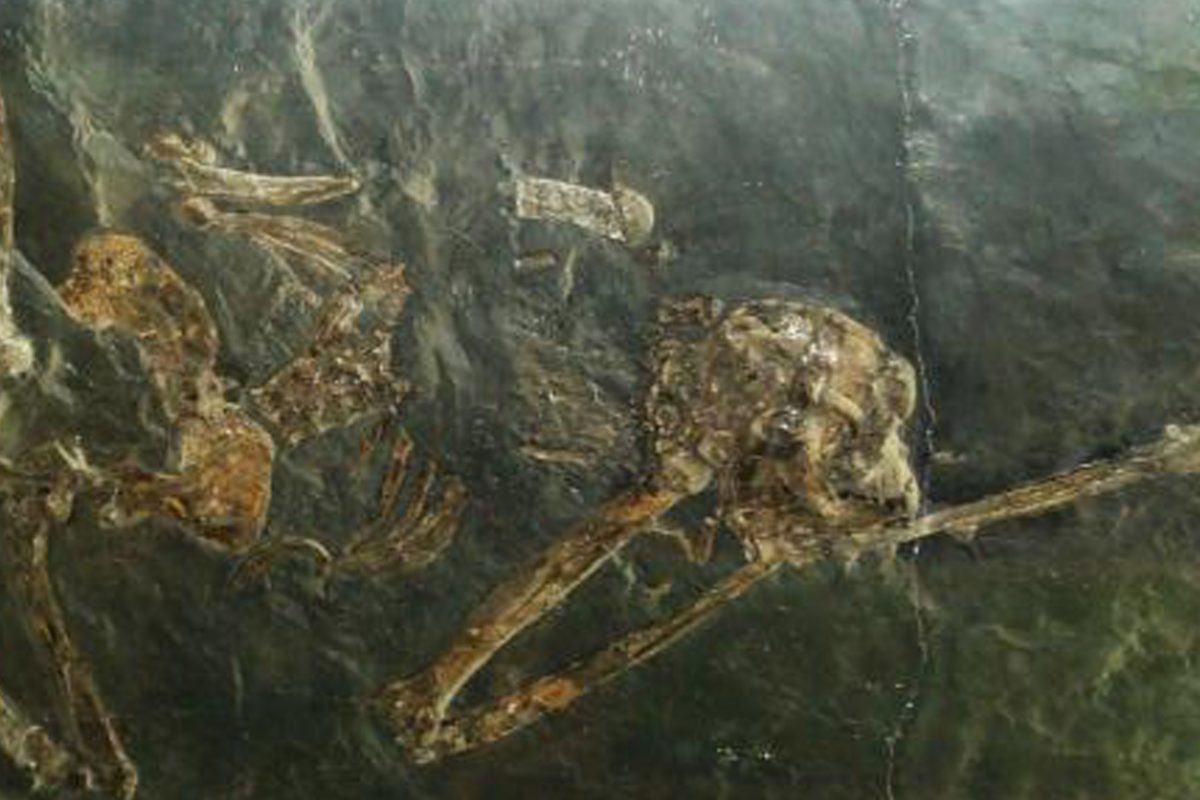For decades, the movement of an ancient ape species called Oreopithecus bambolii has been a matter of debate for scientists. Did it walk like a human across its swampy Mediterranean island or did it move through the trees like other apes?
According to a new study, led by University of Texas at Austin anthropologists Gabrielle A. Russo and Liza Shapiro, the 9- to 7-million-year-old ape from Italy did not, in fact, walk habitually on two legs. The findings refute a long body of evidence, suggesting that Oreopithecus had the capabilities for bipedal (moving on two legs) walking.
The study, published in a forthcoming issue of the Journal of Human Evolution, confirms that anatomical features related to habitual upright, two-legged walking remain exclusively associated with humans and their fossil ancestors.
“Our findings offer new insight into the Oreopithecus locomotor debate,” says Russo, who is currently a postdoctoral research fellow at Northeast Ohio Medical University. “While it’s certainly possible that Oreopithecus walked on two legs to some extent, as apes are known to employ short bouts of this activity, an increasing amount of anatomical evidence clearly demonstrates that it didn’t do so habitually.”
As part of the study, the researchers analyzed the fossil ape to see whether it possessed lower spine anatomy consistent with bipedal walking. They compared measurements of its lumbar vertebrae (lower back) and sacrum (a triangular bone at the base of the spine) to those of modern humans, fossil hominins (extinct bipedal human ancestors), and a sample of mammals that commonly move around in trees, including apes, sloths and an extinct lemur.
The lower spine serves as a good basis for testing the habitual bipedal locomotion hypothesis because human lumbar vertebrae and sacra exhibit distinct features that facilitate the transmission of body weight for habitual bipedalism, says Russo.
According to the findings, the anatomy of Oreopithecus lumbar vertebrae and sacrum is unlike that of humans, and more similar to apes, indicating that it is incompatible with the functional demands of walking upright as a human does.
“The lower spine of humans is highly specialized for habitual bipedalism, and is therefore a key region for assessing whether this uniquely human form of locomotion was present in Oreopithecus,” says Shapiro, a professor of anthropology. “Previous debate on the locomotor behavior of Oreopithecus had focused on the anatomy of the limbs and pelvis, but no one had reassessed the controversial claim that its lower back was human-like.”
